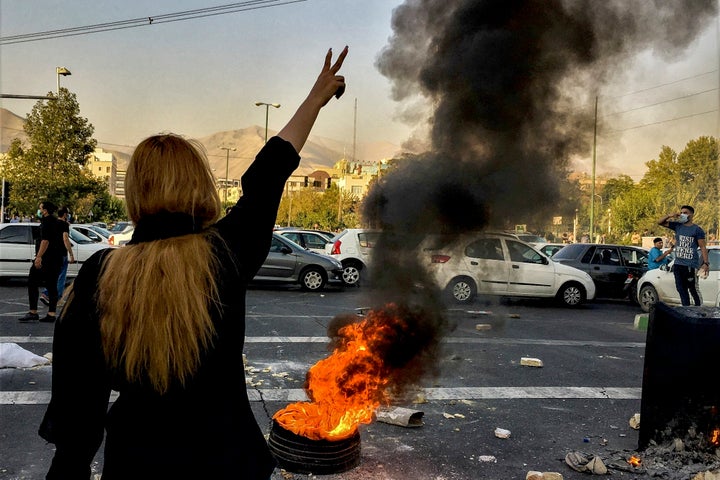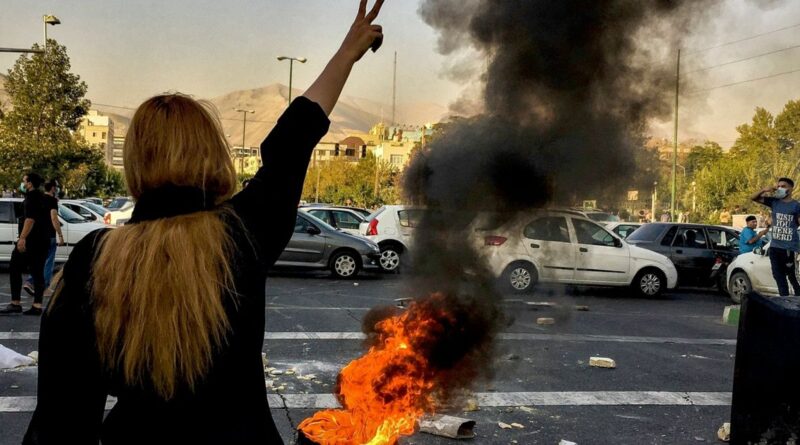Iran Says 22,000 Arrested In Protests Pardoned By Top Leader
DUBAI, United Arab Emirates (AP) — Iran announced Monday that the country’s supreme leader has pardoned more than 22,000 people arrested in the recent anti-government protests that swept the Islamic Republic. There was no immediate independent confirmation of the mass release.
The statement by Iran’s judiciary head Gholamhossein Mohseni Ejehi offered for the first time a glimpse of the full scope of the government’s crackdown that followed the demonstrations over the September death of 22-year-old Mahsa Amini, who had been detained by the country’s morality police.
It also suggests that Iran’s theocracy now feels secure enough to admit the scale of the unrest, which represented one of the most-serious challenges to the establishment since the aftermath of the 1979 Islamic Revolution. Tens of thousands also were detained in the purges that followed the revolution.
However, anger still remains in the country as it struggles through the collapse of the nation’s currency, the rial, economic woes, and uncertainty over its ties to the wider world after the collapse of Tehran’s 2015 nuclear deal with world powers.
The state-run IRNA news agency quoted Ejehi as announcing the figure Monday. Iranian state media had previously suggested Supreme Leader Ayatollah Ali Khamenei could pardon that many people swept up in the demonstrations, ahead of the Muslim holy month of Ramadan, when the pious fast from dawn to dusk. Ramadan starts later next week.
Ejehi said a total of 82,656 prisoners and those facing charges had been pardoned. Of those, some 22,628 had been arrested amid the demonstrations, he said. Those pardoned had not committed theft or violent crimes, he added. His comments suggest that the true total of those detained in the demonstrations is even greater.
In February, Iran had acknowledged “tens of thousands” had been detained in the protests. Monday’s acknowledgment from Ejehi offered an even higher than what activists had previously cited. However, there’s been no mass release of prisoners documented in recent days by Iranian media reports or activists.
More than 19,700 people have been arrested during the protests, according to Human Rights Activists in Iran, a group that’s been tracking the crackdown. At least 530 people have been killed as authorities violently suppressed demonstrations, the group said. Iran has not offered a death toll for months.
“From day one there was no transparent accounting of who was arrested and imprisoned — before or after the mass protests these past months — which is why there’s no way to verify how many are being released now,” said Jasmin Ramsey, the deputy director of the U.S.-based Center for Human Rights in Iran.
“We also know that more than five months after the death of … Mahsa Amini in state custody, not a single Iranian official has been held accountable for the mass killings of street protesters, nor the arbitrary imprisonments of tens of thousands.”

AP Photo/Middle East Images, File
The judiciary’s announcement also came ahead of next week’s celebration of Nowruz, the Persian New Year. On Tuesday, some in Iran also mark nearly 4,000-year-old Persian tradition known as the Festival of Fire that’s linked to the Zoroastrian religion. Hard-liners discourage such celebrations, viewing them as pagan holdovers.
There had been calls for anti-government protests around both events. While mass demonstrations have cooled in recent weeks, nightly chants against Iran’s theocracy can still be heard in some neighborhoods of Iran’s capital, Tehran.
The announcement followed a major development last week, when Iran and Saudi Arabia said on Friday that with China’s mediation, they agreed to reestablish diplomatic ties and reopen embassies after a seven-year freeze in relations. That agreement could help aid an end to the yearslong war in Yemen, which sees a Saudi-led coalition battle the Iranian-backed Houthi rebels who hold its capital, Sanaa. It has also helped boost the rial in recent days against the dollar.
Meanwhile, Belarusian President Alexander Lukashenko visited Tehran and met Monday with his Iranian counterpart, Ebrahim Raisi. Iran has been supplying the bomb-carrying drones that Russia now uses in its war on Ukraine. Lukashenko, the authoritarian leader of Belarus, remains close to Russia, which used Belarusian territory to launch Moscow’s invasion of Ukraine.
Lukashenko said his country and Iran would sign an unspecified set of deals valued at $100 million.
Iran “opposes external pressure, attempts to impose someone else’s will,” Lukashenko said, addressing his hosts. “And how, in spite of everything, you develop modern technologies and nuclear energy. And, as we decided today with the president of Iran, we can be very useful to each other if we truly unite our efforts.”
___
Follow Jon Gambrell on Twitter at www.twitter.com/jongambrellAP.

